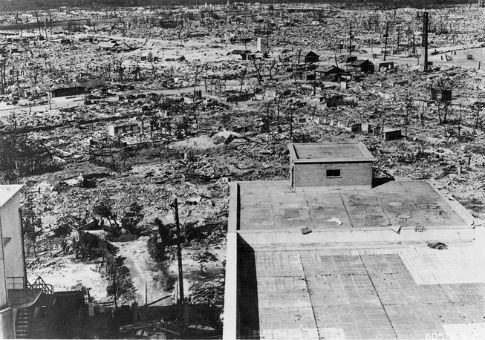Benjamin Schwartz deserves much credit. Annihilating the claim that terrorism isn’t an existential threat to America, Schwartz’s new book, Right of Boom, forces us to consider what just one atomic explosion might mean for humanity’s future. Even better for a book about public policy, he writes with accessibility for serious readers, neither talking down to us nor assuming that we have technical expertise in his field.
Schwartz, a national security analyst at the Department of Defense, paints a picture of mayhem in the aftermath of such an explosion. "On an otherwise calm and uneventful morning, a small nuclear weapon explodes in downtown Washington, DC.… The casualty count rises to over a hundred thousand, and the destruction is measured in hundreds of billions of dollars."
Discussing the history of the nuclear age, Schwartz seeks to educate the reader about the fact that the development of nuclear weapons is not cutting-edge science, nor is it nearly as complicated as commonly assumed. As he puts it, "Iran is a large and wealthy country; Iranian scientists are capable; and the atomic bomb is 1940s technology." Nuclear proliferation is an inevitability we simply have to admit: "The greatest danger remains the great discovery—the knowledge that can’t be unlearned."
There’s no going back. Schwartz argues convincingly that, "even in the absence of super-secret Presidential eye-only intelligence, there is enough information in the public domain about the threat to reach the conclusion that a single atomic bomb going off in an American city is a real possibility." Discussing the cases of Pakistan and North Korea, Schwartz explores how existing nuclear states have been open to exporting their atomic capabilities. Threats of retaliation and sanctions have not deterred the trade of atomic information. He also notes that a state’s development of nuclear weapons does not require that the state have a strong or stable government, and his warnings about Pakistani extremist control of nuclear weapons are especially concerning.
Discussing the complexity of post-nuclear event forensic investigations, Schwartz warns that policymakers could very possibly struggle to ascribe responsibility for an attack. Diplomatic crises, he says, would almost certainly follow. Would, for example, China and Russia support U.S. policies in the aftermath of an attack, or seize the opportunity to push the international order in a direction that better suits them? Would smaller nuclear states not involved in the attack be willing to accede to aggressive American security demands? Schwartz convincingly argues that much post-attack support for the United States would likely be less-than-tangible.
While Right of Boom points out that a nuclear attack upon an major city would change America forever, Schwartz also makes clear that retaliation would be far from Hollywood simple. How many presidents—especially when faced with convoluted intelligence—would authorize nuclear retaliation against a foreign city, packed with civilians?
These issues are terrible to contemplate. Schwartz’s book leaves us with more knowledge and many more questions.
While Schwartz could have developed some themes—for example, more detail about what might happen if most of the U.S. government were to be killed in a blast would have been welcome—Right of Boom addresses the greatest threat facing America. Balanced and packed with impressive analysis, it should be required reading for policymakers, and for all those who care about American security.
